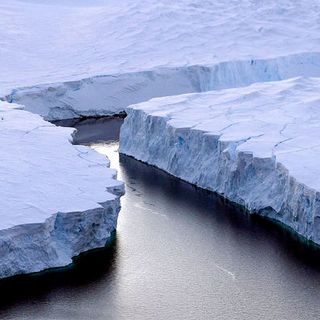The Amazon has been burning for a long time; in August, the Amazon fires got so large they could be seen from space. Not only did the fires shed light upon environmental racism targeted at the tribes losing their homes in the burn, but they also showed the Amazon is not the massive green shield protecting us against the climate crisis like we thought it was.
Now, new research shows the Amazon fires are not only depleting forest cover and people’s livelihoods, but they’re also speeding up the melting of glaciers thousands of kilometers away in the Andes mountains.
A study out of Rio de Janeiro, Brazil, published in the journal Scientific Reports, established a pattern of smoke and soot arising out of the fires between the Amazon forests in Brazil, Bolivia, and Peru toward the Andean ranges along the Western coast of South America; the airborne movement is aided by standard shifting wind directions during the months between August and October. Known as black carbon, the residue settles on the glaciers, darkening the snow, which reduces the snow’s ability to reflect sunlight. The blackened snow thus absorbs more solar radiation than it reflects, which means the snow heats up and melts faster.
Related on The Swaddle:
What Environmental Populism Is, And How It Could Save the Planet
“Amazon deforestation and fires — events that occur mainly in Bolivia, Peru, and Brazil — cannot be considered a regional issue. They have social implications at the continental scale, [because] accelerating the loss of glaciers increases the risk of a water crisis and the vulnerability of several Andean communities in response to climate change,” according to study author Newton de Magalhães Neto, PhD, the BBC reported. Because the communities surrounding the Andes depend on cyclical melting and refreezing of the tropical glacier for their water needs, accelerated melting — and therefore faster disappearance of the glacier — puts their long-term water needs in jeopardy.
The scientists studied the impact of forest fires in the Amazon in 2010 using a computer simulation software called HYSPLIT; with it, they determined the trajectory of black carbon from the Amazon to one glacier in the Andes — the Zongo glacier in Bolivia. In 2010, Neto and team found the runoff from glacial melt increased by 4.5% due to the black carbon deposits.
While the researchers only evaluated the effect of fire and resulting black carbon on one glacier and during one year, Neto warns that “pressure related to global food demand may result in further expansion of Brazilian agriculture and deforestation,” which will result in bigger, more destructive fires, The Independent reported. “This would result in enhanced black carbon and CO2 emissions that may impact Andean glaciers.”




